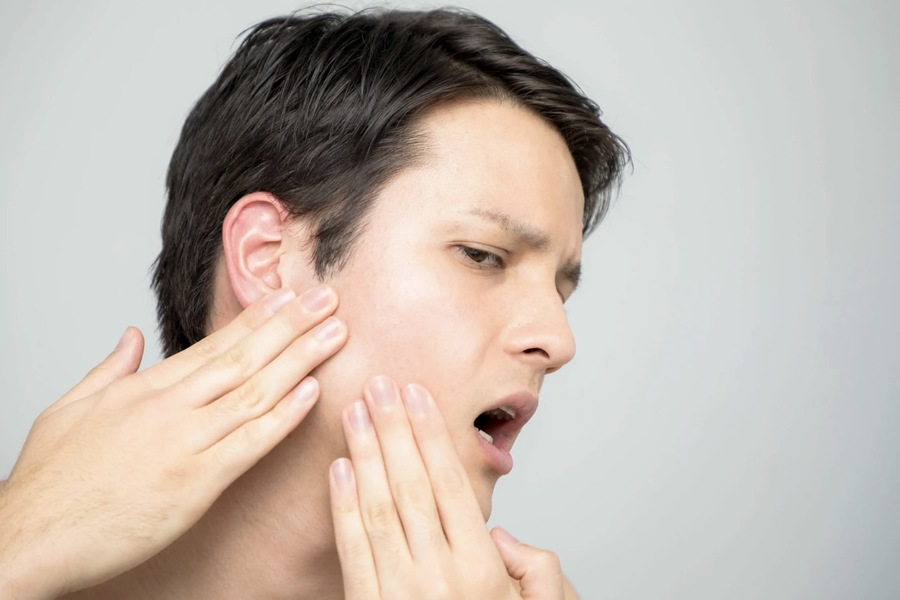Temporomandibular joint (TMJ) disorders have long presented challenges in diagnosis and treatment due to the complexity of the jaw joint and the variety of symptoms associated with these conditions. Over the decades, significant advancements in medical technology and a better understanding of TMJ pathophysiology have led to more effective treatments. This article explores the evolution of TMJ treatment, highlighting key developments and how they have improved patient care.
Early Understanding and Treatments
In the early 20th century, the understanding of TMJ disorders was limited, and treatments were primarily empirical. TMJ disorders were often misdiagnosed due to the overlap of symptoms with other conditions such as ear infections, dental issues, and headaches. Initial treatments focused on symptom management rather than addressing the underlying causes.
Early Treatments
- Pain Management: In the early days, pain management involved the use of aspirin and other over-the-counter pain relievers. Heat and cold therapy were also commonly recommended to alleviate pain and reduce inflammation.
- Dietary Adjustments: Patients were often advised to consume soft foods to minimize jaw movement and reduce pain.
- Basic Appliances: Simple dental splints were sometimes used to stabilize the jaw and prevent teeth grinding.
Mid-20th Century: Advancements in Diagnosis
By the mid-20th century, advancements in diagnostic technology began to improve the understanding of TMJ disorders. Radiographic imaging, particularly the introduction of X-rays, allowed for better visualization of the jaw joint, aiding in more accurate diagnosis.
Diagnostic Improvements
- X-rays: The use of X-rays provided detailed images of the bone structures in the jaw, helping to identify structural abnormalities and degenerative changes.
- Clinical Examination: Standardized clinical examination protocols were developed, allowing for more consistent assessment of jaw function and the identification of TMJ disorders.

Late 20th Century: Multidisciplinary Approach
The late 20th century saw the emergence of a multidisciplinary approach to TMJ treatment, recognizing the complex interplay of structural, muscular, and psychological factors involved in these disorders. This approach led to more comprehensive and effective treatment plans.
Multidisciplinary Teams
- Dentists and Oral Surgeons: Dental professionals continued to play a crucial role in diagnosing and treating TMJ disorders, often collaborating with other specialists to provide holistic care.
- Physical Therapists: Physical therapy became an integral part of TMJ treatment, focusing on exercises and techniques to improve jaw function and reduce muscle tension.
- Psychologists: The role of psychological factors in TMJ disorders was increasingly recognized, leading to the inclusion of stress management and behavioral therapy in treatment plans.
Advanced Treatments
- Custom-Fitted Splints: Advances in dental technology allowed for the development of custom-fitted splints and night guards, providing more effective management of bruxism and jaw stabilization.
- Surgical Interventions: For severe cases, surgical options such as arthrocentesis (joint lavage) and arthroscopy (minimally invasive joint surgery) became available, offering significant relief for patients with joint damage.
The 21st Century: Technological Innovations
The turn of the 21st century brought about significant technological advancements that revolutionized the diagnosis and treatment of TMJ disorders. These innovations have made treatments more precise, less invasive, and more effective.
Advanced Imaging Techniques
- MRI and CBCT: Magnetic Resonance Imaging (MRI) and Cone Beam Computed Tomography (CBCT) have become standard diagnostic tools, providing detailed images of both the soft and hard tissues of the TMJ. These imaging techniques allow for precise diagnosis and better treatment planning.
- Ultrasound: Ultrasound imaging has gained popularity for its ability to provide real-time visualization of the TMJ, aiding in the diagnosis of joint effusion and disc displacement.
Minimally Invasive Treatments
- Botox Injections: The use of botulinum toxin (Botox) injections to relax jaw muscles has proven effective in reducing pain and improving function in patients with TMJ disorders.
- Platelet-Rich Plasma (PRP) Therapy: PRP therapy involves injecting concentrated platelets from the patient’s own blood into the TMJ to promote healing and reduce inflammation. This regenerative treatment has shown promising results in clinical studies.
Digital Revolution and Personalized Medicine
The digital revolution has further transformed TMJ treatment by enabling more personalized and precise care. Digital tools and data-driven approaches are now integral to modern TMJ treatment protocols.
Digital Occlusal Analysis
Digital occlusal analysis uses computerized sensors to evaluate bite force distribution and occlusal contacts with high precision. This technology helps identify occlusal problems contributing to TMJ disorders, guiding appropriate dental interventions.
3D Printing and Custom Devices
3D printing technology allows for the creation of highly customized dental devices, such as occlusal splints and night guards. These devices are tailored to the patient’s specific anatomy, providing better fit and comfort, and enhancing treatment effectiveness.
The Role of Telemedicine
Telemedicine has become increasingly important in the management of TMJ disorders, especially in the context of the COVID-19 pandemic. Virtual consultations and remote monitoring have made it easier for patients to access specialized care without the need for frequent in-person visits.
Benefits of Telemedicine
- Increased Accessibility: Telemedicine expands access to TMJ specialists, particularly for patients in remote or underserved areas.
- Convenience: Virtual consultations allow for more flexible scheduling and reduce the need for travel, making it easier for patients to receive ongoing care.

Integrative and Holistic Approaches
In recent years, there has been a growing interest in integrative and holistic approaches to TMJ treatment, recognizing the importance of addressing the whole person rather than just the symptoms.
Integrative Therapies
- Acupuncture: Acupuncture has been used as a complementary therapy for TMJ disorders, helping to reduce pain and improve function.
- Nutritional Counseling: Diet and nutrition play a crucial role in managing inflammation and supporting overall health, making nutritional counseling an important component of TMJ treatment.
Conclusion
Over the years, temporomandibular joint treatment has changed a lot. There have been big improvements in evaluation, treatment methods, and working together between different fields. From the early days of informal treatments to the more advanced, technology-based methods used today, TMJ treatment has come a long way and helped patients a great deal. As science and technology keep getting better, the future looks bright for even better and more customized TMJ care. By using these new technologies, doctors can make sure that people with TMJ disorders get the best care possible, which will improve their general health and quality of life.

Skier, doer, record lover, Bauhaus fan and proud pixelpusher. Working at the fulcrum of simplicity and purpose to develop visual solutions that inform and persuade



